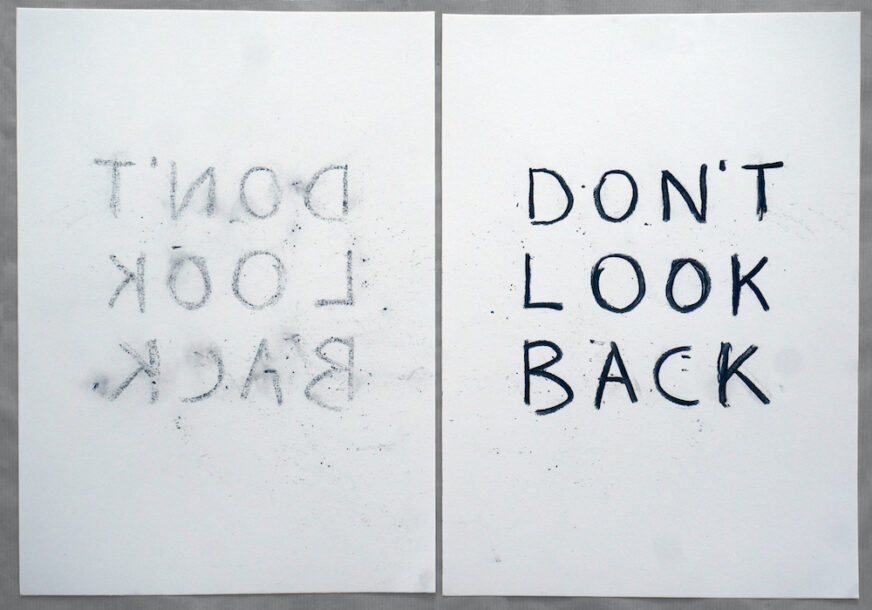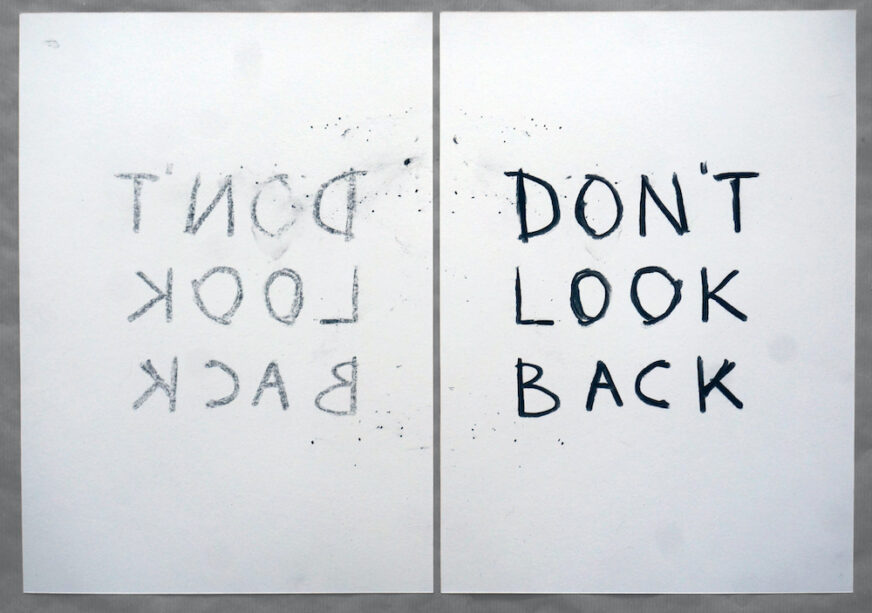In an explicit echo of his recent Corten steel sculpture, Don’t Look Back (Frieze Sculpture, 2022), Etchells’ new drawings – Don’t Look Back (I), (II), (III) and (IV) – are paired pieces created using charcoal on archival paper. In them Etchells makes a bold play on language and its visual appearance in relation to the viewer reader. Each of the works pairs a correctly orientated version of the text ‘Don’t Look Back’ , with a version of it that is reversed or mirrored in the horizontal plane. Placing front-orientated and backwards writing side by side Etchells’ creates a contradiction in the viewers relation to the artwork, inviting a perpetual unease or doubt about the validity of our perspective. At the same time, the content of the work – its simple imperative admonishment against nostalgia – intersects powerfully with the fact that in relation to one side of the work we are, as readers, already ‘behind’ or looking back on the text itself.
The pairs that make up the series Don’t Look Back (I), (II), (III) and (IV) each comprise a drawing and a mono print created from the drawing itself. In Don’t Look Back (I), (II), (III) the original drawing sits to the right, it’s imperfect mirror image to the left, the latter bearing the subtle imperfections of the mono print process as well as traces produced by charcoal fragments spilled during the procedure. In Don’t Look Back (IV) the order of the pairing is reversed and the original drawing sits to the left, it’s mirror image just to the left.
Etchells work here – in the Don’t Look Back drawings and the contemporaneous steel sculpture, as well as in his recent permanent large-scale work for public space in Cologne, From the Other Side – stages an explicit play on and with the idea of the viewers perspective – presenting both the ‘correct’ way to encounter text and the ‘incorrect’ way in kind of full equivalence. As is often the case, Etchells’ emphasis is on both the semantics of the phrases he’s working with, and also on the visual and sculptural qualities of written language when it is encountered from an unfamiliar (reversed) perspective and (in the case of the drawings) inviting us to enjoy the aesthetic qualities of the degraded or imperfect versions produced through the mono print process.










 Hearing Voices, 2020
Hearing Voices, 2020  Private Jokes, 2014
Private Jokes, 2014  Some Imperatives, 2014
Some Imperatives, 2014